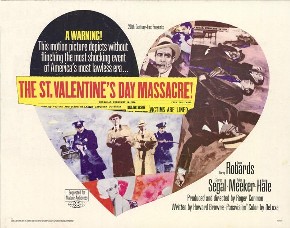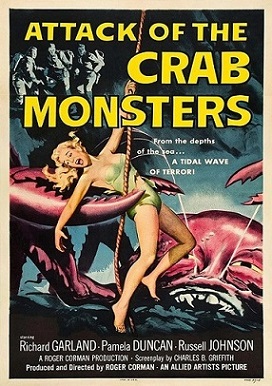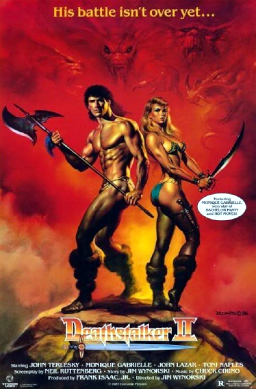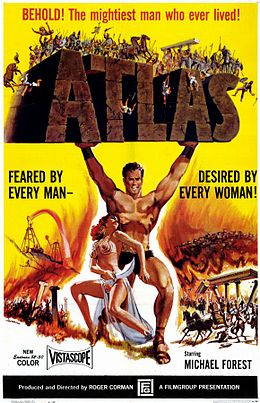
John Thomas Sayles is an American independent film director, screenwriter, editor, actor, and novelist. He is known for writing and directing the films The Brother from Another Planet (1984), Matewan (1987), Eight Men Out (1988), Passion Fish (1992), The Secret of Roan Inish (1994), Lone Star (1996), and Men with Guns (1997).

John Herbert Dillinger was an American gangster during the Great Depression. He commanded the Dillinger Gang, which was accused of robbing 24 banks and four police stations. Dillinger was imprisoned several times and escaped twice. He was charged with but not convicted of the murder of an East Chicago, Indiana, police officer, who shot Dillinger in his bullet-proof vest during a shootout; it was the only time Dillinger was charged with homicide.

Roger William Corman is an American film director, producer, and actor. Known under various monikers such as "The Pope of Pop Cinema", "The Spiritual Godfather of the New Hollywood", and "The King of Cult", he is known as a trailblazer in the world of independent film. Many of Corman's films are low-budget cult films including some which are adapted from the tales of Edgar Allan Poe.

Battle Beyond the Stars is a 1980 American space opera film produced by Roger Corman, directed by Jimmy T. Murakami, and starring Richard Thomas, Robert Vaughn, George Peppard, John Saxon, Sybil Danning and Darlanne Fluegel. Intended as a futuristic "Magnificent Seven in outer space", the screenplay was written by John Sayles with the score by James Horner and special effects designed by filmmaker James Cameron. The film was theatrically released by Corman's New World Pictures and was a moderate box office success, despite receiving mixed reviews from critics.

Boxcar Bertha is a 1972 American romantic crime drama film directed by Martin Scorsese and produced by Roger Corman, from a screenplay by Joyce H. Corrington and John William Corrington. Made on a low budget, the film is a loose adaptation of Sister of the Road, a pseudo-autobiographical account of the fictional character Bertha Thompson. It was Scorsese's second feature film.

The St. Valentine's Day Massacre is a 1967 American gangster film based on the 1929 mass murder of seven members of the Northside Gang on orders from Al Capone. The picture was directed by Roger Corman, written by Howard Browne, and starring Jason Robards as Capone, Ralph Meeker as Moran, George Segal as Peter Gusenberg, and David Canary as Frank Gusenberg.

Attack of the Crab Monsters is a 1957 independently made American black-and-white science fiction-horror film, produced and directed by Roger Corman, that stars Richard Garland, Pamela Duncan, and Russell Johnson. The film was distributed by Allied Artists as a double feature showing with Corman's Not of This Earth.

The Undead is a 1957 horror film directed by Roger Corman and starring Pamela Duncan, Allison Hayes, Richard Garland and Val Dufour. It also featured Corman regulars Richard Devon, Dick Miller, Mel Welles and Bruno VeSota. The authors' original working title was The Trance of Diana Love. The film follows the story of a prostitute, Diana Love (Duncan), who is put into a hypnotic trance by psychic Quintus (Dufour), thus causing her to regress to a previous life. Hayes later starred in Attack of the 50 Foot Woman (1958). The film was released on March 15, 1957 by American International Pictures as a double feature with Voodoo Woman.

Dillinger is a 1973 American biographical gangster film, dramatizing the life and criminal exploits of notorious bank robber John Dillinger. It is written and directed by John Milius in his feature directorial debut, and stars Warren Oates as Dillinger, Ben Johnson as FBI Agent Melvin Purvis, and Michelle Phillips in her first film performance as Dillinger's moll Billie Frechette. Other actors in the film include Cloris Leachman, Harry Dean Stanton, and Richard Dreyfuss.

Ana Cumpănaș or Anna Sage, nicknamed Woman in Red, was a Romanian prostitute and brothel owner in the American cities of Chicago and Gary, Indiana. She is best known for having assisted the Federal Bureau of Investigation in tracking down gangster John Dillinger.

Dementia 13, known in the United Kingdom as The Haunted and the Hunted, is a 1963 independently made black-and-white horror-thriller film produced by Roger Corman, and written and directed by Francis Ford Coppola in his feature film directorial debut. The film stars William Campbell and Luana Anders with Bart Patton, Mary Mitchell, and Patrick Magee. It was released in the United States by American International Pictures during the fall of 1963 as the bottom half of a double feature with Corman's X: The Man with the X-ray Eyes.

Lewis Teague is an American film director, whose work includes Alligator, Cat's Eye, Cujo, The Jewel of the Nile, The Dukes of Hazzard: Reunion!, Navy SEALs and Wedlock.

Creature from the Haunted Sea is a 1961 horror comedy movie directed by Roger Corman. Written by Charles B. Griffith, the movie is a parody of spy, gangster, and monster movies, concerning a secret agent, XK150, who uses the name "Sparks Moran" in order to infiltrate a criminal gang commanded by Renzo Capetto, who is trying to transport an exiled Cuban general with an entourage and a large portion of the Cuban treasury out of Cuba. Filmgroup released the movie as a double feature with Devil's Partner.

Gas-s-s-s is a 1970 post-apocalyptic black comedy film produced and released by American International Pictures.

Gunslinger is a 1956 American Western film directed by Roger Corman and starring John Ireland, Beverly Garland and Allison Hayes. The screenplay was written by Mark Hanna and Charles B. Griffith.

Deathstalker II, also known as Deathstalker II: Duel of the Titans, is a 1987 Argentine-American fantasy comedy-adventure film directed by Jim Wynorski and a sequel to 1983's Deathstalker. It was written by Neil Ruttenberg and starring John Terlesky, Monique Gabrielle, John LaZar and María Socas. Terlesky replaced Rick Hill, the protagonist from the previous film, in the starring role of Deathstalker. This is the last sword and sorcery movie that Roger Corman produced in Argentina during the 80s.

Von Richthofen and Brown, alternatively titled The Red Baron, is a 1971 war film directed by Roger Corman and starring John Phillip Law and Don Stroud as Manfred von Richthofen and Roy Brown. Although names of real people are used and embedded in basic historic facts, the story by Joyce Hooper Corrington and John William Corrington makes no claim to be historically accurate, and in fact is largely fictional.

Rock All Night is a 1957 crime drama film produced and directed by Roger Corman. Distributed by American International Pictures, it is based on a 25-minute television episode of The Jane Wyman Show from 1955 called "The Little Guy." It stars Dick Miller, Russell Johnson and Abby Dalton. It co-stars Mel Welles, Ed Nelson and Clegg Hoyt. The film was released as a double feature with Dragstrip Girl.

The Saga of the Viking Women and Their Voyage to the Waters of the Great Sea Serpent is a 1958 American action-adventure horror film directed by Roger Corman. It stars Abby Dalton, Susan Cabot and June Kenney.

Atlas is a 1961 peplum film directed by Roger Corman and starring Michael Forest and Frank Wolff. It was filmed in Greece. Corman called it "my last attempt to do a big picture on a low budget." Writer Charles B. Griffith said "Atlas was a mess. It was a doomed project. "




















